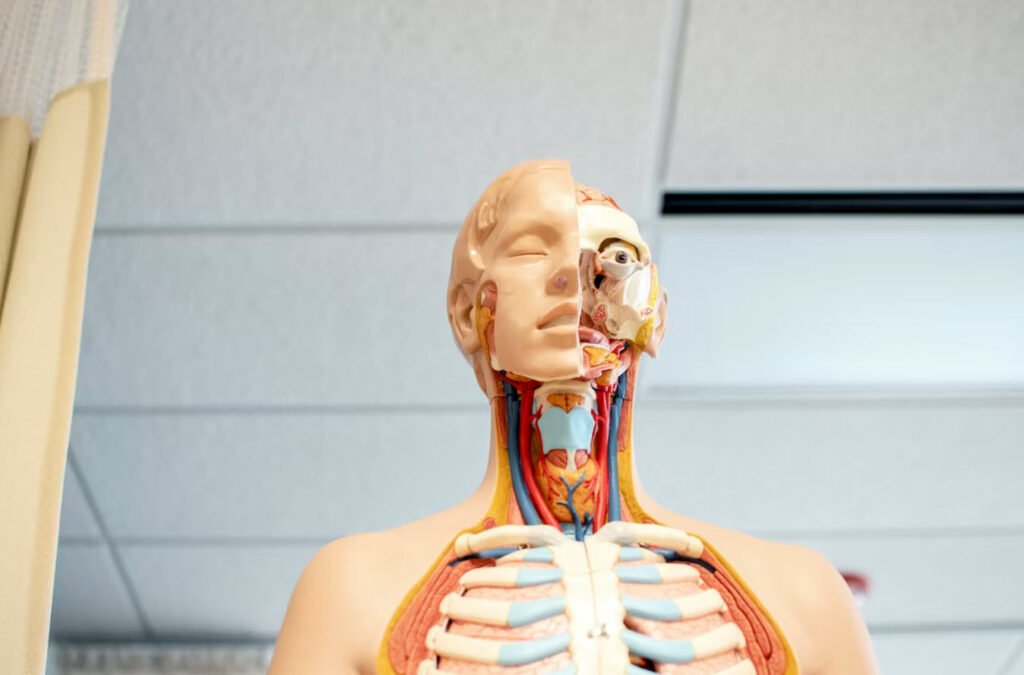
General physiology is a broad field that encompasses the fundamental principles and processes that regulate the functioning of the human body. It includes topics such as homeostasis, cell physiology, membrane transport, metabolism, and the integration of various physiological systems.
Here is the list of questions related to General Physiology:
1. The respiratory enzyme in mitochondria are:
a. Flavoprotein and cytochrome
b. Albumin and calcium
C. Renin and angiotensin
d. Cobalt and zinc
Answer – a
2. The digestive apparatus of cell is:
a. Nucleus
b. Lysosomes
c. Endoplasmic reticulum
d. Centrosome
Answer – b
3. The chromatin are classified on genetic bases as:
a. Euchromatin and heterochromatin
b. Neochramatin and paleochromatin
C. Heteropyknotic and hyopyknotic
d. Somatochromatin and cytochromatin
Answer – a
4. The enzyme which activates apoptosis is:
a. Caspases
b. Ribonucleases
c. Carboxylase
d. Transaminase
Answer – a
5. Potassium ion channels are:
a. Dimmers
c. Tetramers
b. Monomers
d. None of the above
Answer – c
6. The osmolarity of normal human plasma is:
a. 490 mOsm/L
b. 190 mOsm/L
c. 390 mOsm/L
d. 290 mOsm/L
Answer – d
7. Match the following:
| a. Rhodopsin | 1. Secondary hyperparathyroidism |
| b. Nicotinic acid receptor | 2. Colour blindness |
| c. Ca2+ receptor | 3. Retinitis pigmentosa |
| d. Cone opsin | 4. Myasthenia gravis |
Answer – a-3, b-4, c-1, d-2
8. In Gibbs done non-membrane equilibrium:
a. Diffusible anion (Cl-) concentration is lesser on side without the non-diffusible anion
b. Diffusible anion (Cl-) concentration is equal on either side
c. Diffusible anion (Cl-) concentration is greater on side without the non-diffusible anion
d. None of the above
Answer – c
9. Electrotonic potentials are:
a. Catelectrotonic potential
b. Anelectrotonic potential
c. Neutral potential
d. Both catelectrotonic potential and anelectrotonic potential
Answer – d
10. Resting membrane potential in pacemaker average around:
a. – 90 mV
b. – 35 mV
c. – 55 mV
d. – 70 mV
Answer – c
11. The total amount of plasma in human body is:
a. 5% of body weight
b. 10% of body weight
c. 15% of body weight
d. 20% of body weight
Answer – a
12. Transcellular water amounts to …….. % of extracellular fluid.
a. 8%
C. 2.5%
b. 4%
d. 12%
Answer – c
13. Interstitial fluid and lymph amounts to …….. % of extracellular fluid.
a. 7.5%
b. 20%
c. 30%
d. 40%
Answer – b
14. The rate of low of lymph along the thoracic duct is:
a. 10-15 ml per minute
b. 1.0-1.5 ml per minute
c. 5 -10 ml per minute
d. 50-60 ml per minute
Answer – b
15. The pressure of the lymph tissue and thoracic duct is:
a. Tissue (8 to 10 mm Hg) and thoracic duct (0 to 4 mm Hg)
b. Tissue (20 to 30 mm Hg) and thoracic duct (6 to 8 mm Hg)
c. Tissue (10 to 15 mm Hg) and thoracic duct (8 to 10 mm Hg)
d. None of the above
Answer – a
16. Microglia are found in:
a. Liver
b. Bone marrow
c. Spleen
d. Central nervous system
Answer – d
You may also like:- Code/Decode – Practice Test Questions With Answers
- Common Interview Questions and How to Tackle Them
- Mastering 25 Common Job Interview Questions
- Biology MCQ Quiz Questions with Answers
- [Human Physiology] Gastro-Intestinal Tract – MCQ Questions with Answers
- [Human Physiology] Respiratory System – MCQ Questions with Answers
- [Human Physiology] Cardiovascular System – MCQ Questions with Answers
- [Human Physiology] Nerve and Muscle – MCQ Questions with Answers
- [Human Physiology] Blood – MCQ Questions with Answers
- Top 50 Biology One-liners Questions and Answers








